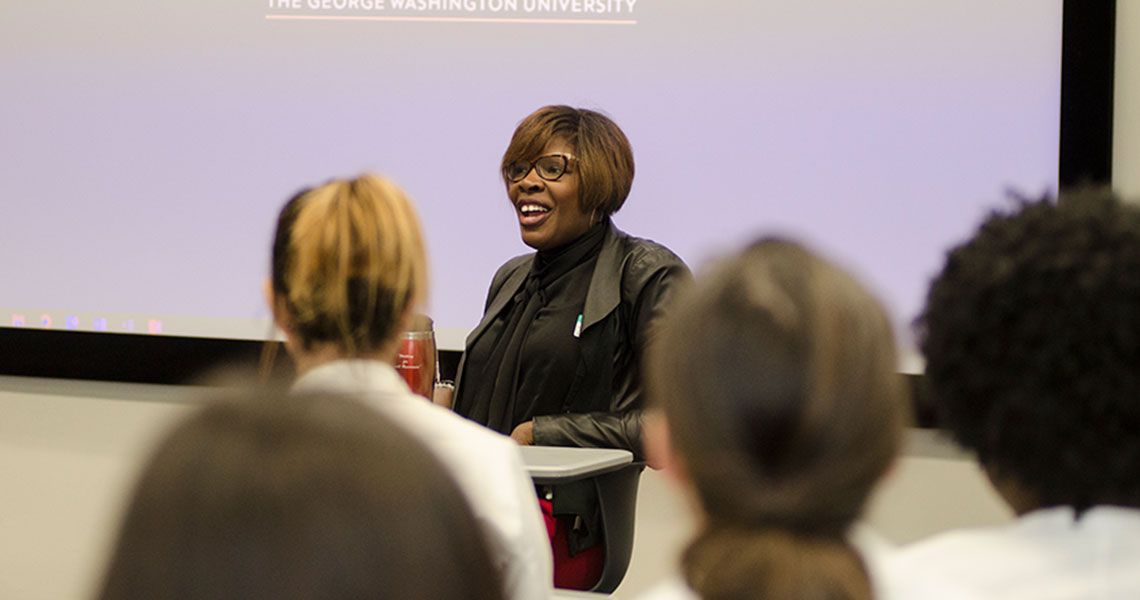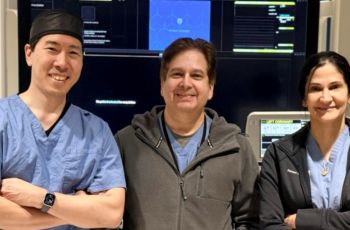MD students in the Community/Urban Health Scholarly Concentration at the George Washington University (GW) School of Medicine and Health Sciences (SMHS) who hope to one day integrate clinical and population health care received sage advice from someone who has done just that and reached the upper echelons in the field. The counsel: Take your experience with patients and use that to develop responsible solutions to public health problems.
“When I was in the space you are all in … I couldn’t imagine the type of career opportunities that exist in health, population health, and health care,” LaQuandra S. Nesbitt, MD, MPH, director of the District of Columbia Department of Health, said to the students. “I encourage you to take advantage of folks like me who come in. Dabble in as much as possible.”
SMHS offers nine specific tracks of study for students, called Scholarly Concentrations, which serve as educational programs that enrich the students’ experiences.
During her residency at the University of Maryland’s Department of Family Medicine, where she served as chief resident, Nesbitt said she became increasingly interested in the social contexts in which her patients lived and how that social context impacted their ability to be successful to the care plans she developed for them.
This drove a desire in Nesbitt to help manage patient issues not only at a clinical level, but also at a population health level. Now she has the teams and the data to analyze how health care is used in D.C., and what policies and programs can help improve care.
As an example, Nesbitt pointed to the perception that residents in Wards 7 and 8 don’t have access to proper primary care. In reality, she noted, a high number of Medicaid patients in those wards do receive primary care. But there’s a challenge: People in Wards 7 and 8 are traveling to other areas of the city for health care services.
The Department of Health had to dig deeper, Nesbitt said, to figure out why people would travel so far for care. “You have conversations and say ‘there’s plenty of primary care services here, why do you choose to leave?’ They said they want to go other places because they have a better brand, they talk about their perceptions of quality of care in Wards 7 and 8, and they start having conversations about the convenience of the care in Wards 2 or 3.”
Armed with that knowledge, Nesbitt said, D.C. can now begin to address issues related to brand, quality, and convenience in Wards 7 and 8. “I have the ability now in my role to have that experience of seeing people in a clinical setting and to take that information and direct a whole team of people … to turn around and inform policy that says if you’re going to build a new health asset, if you’re going to start a new clinic, it has to be responsive to what people need.”
She added that the students should take advantage of all the Clinical Public Health curriculum including seminars, talks, and other resources GW is offering them.
“When you’re engaging with your patients, be policy-oriented or program-oriented and think about how you could develop responsible solutions,” she said. “And when you come up with ideas, bounce that off the person sitting before you. ... Keep your eyes wide open as you go through this process.”



